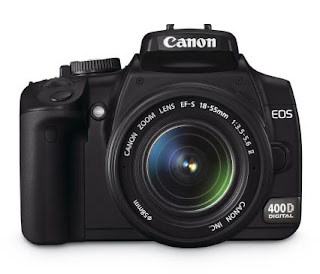 So, you want a digital camera and an MP3 player, but you'd rather not carry two bits of kit around with you. There are several options that offer 'all in one' solutions to this dilemma. One route is to carry a phone with a camera and music player, while another is to look at devices like the G-Shot DV 610 which offer these things and a range of other extras on top.
So, you want a digital camera and an MP3 player, but you'd rather not carry two bits of kit around with you. There are several options that offer 'all in one' solutions to this dilemma. One route is to carry a phone with a camera and music player, while another is to look at devices like the G-Shot DV 610 which offer these things and a range of other extras on top.
The G-Shot DV 610, in fact, claims to offer six features; digital stills and video camera (that's two), MP3 player, Web-cam, digital voice recorder and the ability to be used as a mass storage device. All in a package measuring 100 x 70 x 30mm.
Aside from the device itself, you get a range of extras; a belt-clip-style carrying case, a lanyard for wearing the thing around your neck, a tripod for when using the G-Shot DV 610 as a Web-cam, a stereo headset, a USB cable for PC connections and AV cables for sending movies to a TV.
You also get two printed manuals and a CD with device drivers and various bits of image manipulation software for PCs (Mac users just get the drivers). The box contents are topped off by a mains power cable for charging the Lithium-Ion battery that powers the G-Shot DV 610.
There is 16MB of built-in memory but only 4MB of this is available for storage. There's also an SD card slot that supports cards up to 512MB in size. If you have a card in the slot, everything you save is automatically sent there, which is handy as it saves you having to make settings changes.
Moving between the various features is achieved using a combination of buttons and a navigation wheel on two edges of the G-Shot DV 610, with the flip-out, 2-inch LCD screen that you use for framing video and stills being used to show options. The screen swivels nicely to give a wide range of viewing angles and ways of holding the hardware.
Using the device for mass storage worked well enough, as did the Web-cam feature, though the driver provided is only for PCs and you'll need your own video-calling software. The voice recording also worked without a hitch.
Where digital video and stills were concerned, taking shots and videos was easy enough and there are switches and buttons on the camera for macro, landscape and portrait stills and for using the up-to-8x digital zoom.
There's a flash and self-timer, a small range of white balance settings, some effects (normal, black and white, sepia), and a few other settings to fiddle with. There's also a funny 'two in one' shooting mode that lets you take two snaps for opposite halves of a single image. It's rather fun.
Images can be shot at resolutions of 2976 x 2232, 2048 x 1536 and 1024 x 768 pixels, the higher resolution achieved by software interpolation. Video is captured at 640 x 480 and 320 x 240 pixels, both at 30 frames per second. Image quality was surprisingly good, certainly fine for sharing images by e-mail or using on a Web site.
Finally, we copied some MP3s from a hard drive onto an SD card and played them back. Quality through the supplied headphones was reasonable but not wonderful, while the volume level was quite good. The headphone connector is 2.5mm which means that to use a higher quality set you'll need a converter.






























